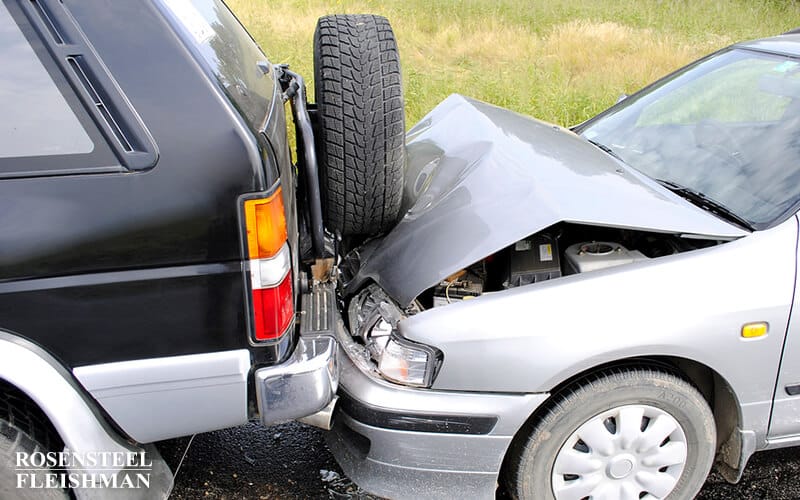According to local news outlets, traffic fatalities in the United States have decreased for the second consecutive year in 2023, even as Americans drove more miles. The National Highway Traffic Safety Administration (NHTSA) revealed that there were 40,990 deaths in motor vehicle crashes last year, marking a 3.6% decline from the 42,514 fatalities in 2022. […]

Failure to Wear Seatbelt not Contributory Negligence in North Carolina
In North Carolina, motorists and their passengers are required to wear seatbelts, and if the passengers are young children, those children must ride in child restraint seats. The same North Carolina statute provisions which contain these requirements also provide that the failure to wear a seatbelt or ride in a child restraint system is not contributory negligence in North Carolina. Although these statutes became effective in the 1980’s, even prior to these statutes, it was difficult to base a plaintiff’s contributory negligence on failure to wear a seatbelt.
G.S. 20-135.2A requires that “each occupant of a motor vehicle manufactured with seat belts … [has] a seatbelt properly fastened about his or her body at all times when the vehicle is in forward motion on a street or highway in this State.” However, subsection (d) of the statute states that “[e]vidence of failure to wear a seat belt shall not be admissible in any criminal or civil trial, action, or proceeding except in an action based on a violation of this section or as justification for the stop of a vehicle or detention of a vehicle operator and passengers.”
Children passengers are subject to a separate statute provision. G.S. 20-137.1 provides that
(a) Every driver who is transporting one or more passengers of less than 16 years of age shall have all such passengers properly secured in a child passenger restraint system or seat belt which meets federal standards applicable at the time of its manufacture.
(a1) A child less than eight years of age and less than 80 pounds in weight shall be properly secured in a weight-appropriate child passenger restraint system. In vehicles equipped with an active passenger-side front air bag, if the vehicle has a rear seat, a child less than five years of age and less than 40 pounds in weight shall be properly secured in a rear seat, unless the child restraint system is designed for use with air bags. If no seating position equipped with a lap and shoulder belt to properly secure the weight-appropriate child passenger restraint system is available, a child less than eight years of age and between 40 and 80 pounds may be restrained by a properly fitted lap belt only.
Subsection (d) of the statute states that “[t]he violation shall not constitute negligence per se or contributory negligence per se” and “[t]he violation shall not be evidence of negligence or contributory negligence.”
Prior to these statute provisions, motorists and passengers were not required to wear seatbelts. Well before the enactment of the statute requiring the use of seatbelts, the North Carolina Supreme Court looked at the issue of contributory negligence from failure to wear a seatbelt in Miller v. Miller (1968). The Court reasoned that
It would be a harsh and unsound rule which would deny all recovery to the plaintiff, whose mere failure to buckle his belt in no way contributed to the accident, and exonerate the active tort-feasor but for whose negligence the plaintiff's omission would have been harmless.
The Court also doubted that “such a rule would increase the use of seat belts.”
The Court then theorized about what would happen in the event that the legislature passed a law requiring the use of seatbelts and stated that “[s]hould the duty to use a seat selt be imposed--either by the legislature or by the court--, the issue of proximate cause would then loom.” In order to show which injuries flowed from which negligence, the Court imagined various safety experts testifying about the relationship between failure to wear a seatbelt and the injuries sustained and “the complicated task of damage apportionment would 'invite verdicts on prejudice and sympathy contrary to the law,' create 'unnecessary conflicts in result,' and 'degrade the law by reducing it to a game of chance.’” Perhaps to prevent this scenario as well as in response to the other concerns mentioned in Miller regarded the harshness of such a rule, when the North Carolina legislature did pass a law requiring seatbelt use, thereby creating the duty to use a seatbelt, they specifically exempted the failure to wear a seatbelt from being an act of contributory negligence. Instead, the statute provides nominal fines for failure to wear a seatbelt or use proper child restraints.
The Court in Miller also held that the doctrine of avoidable consequences was not applicable in the context of failing to wear one’s seatbelt. The Court defined the doctrine of avoidable consequences in North Carolina as the rule that “an injured plaintiff… must exercise reasonable care and diligence to avoid or lessen the consequences of the defendant's wrong. If he fails to do so, for any part of the loss incident to such failure, no recovery can be had.” The doctrine of avoidable consequences is distinct from contributory negligence in the timing of the acts.
Contributory negligence occurs either before or at the time of the wrongful act or omission of the defendant. On the other hand, the avoidable consequences generally arise after the wrongful act of the defendant. That is, damages may flow from the wrongful act or omission of the defendant, and if some of these damages could reasonably have been avoided by the plaintiff, then the doctrine of avoidable consequences prevents the avoidable damages from being added to the amount of damages recoverable.
In Miller, the doctrine of avoidable consequences did not fit to relieve the defendant of liability because the plaintiff’s failure to use his seatbelt was an act that occurred before the defendant’s negligent act.
Caselaw that has looked at the issue of seatbelts and contributory negligence since the passage of the law have held that misuse of a seatbelt is equivalent to nonuse of a seatbelt, and similarly cannot be used as evidence of contributory negligence. The North Carolina Court of Appeals came to this holding in the 1996 case, Chaney v. Young. In that case, a mother was sitting in the front passenger seat, holding her infant son on her lap, and the seatbelt was strapped around them both. When their car was involved in an accident, the infant son suffered injuries and died. The court held that “improper use of a seat belt under the circumstances of this case is tantamount to nonuse” and “the statutory provisions are applicable.”
If you have been injured in a car accident, contact Rosensteel Fleishman Car Accident & Injury Lawyers (704) 714-1450, to speak with an attorney about your options.
Additional Car Accident Articles
Dealing with the aftermath of a car accident can be overwhelming. It's not just the physical recovery; the legal side of things can feel like a maze. That's where a car accident lawyer in Charlotte, NC, can step in to simplify the process for you. If you're feeling stuck and unsure about what to do […]
Getting into a car accident is one of those things you never really see coming, and it can leave you feeling pretty shaken up, not just physically but also with the maze of legalities to deal with afterward. That's where the importance of finding a reliable car accident lawyer comes into play. Imagine having someone […]
Dealing with the aftermath of a car accident can be overwhelming, to say the least. Suddenly, you're thrust into a world of insurance claims, medical appointments, and potential legal battles, all while trying to recover from your injuries. It's a lot to handle on your own. That's where finding a top-rated personal injury lawyer in […]
